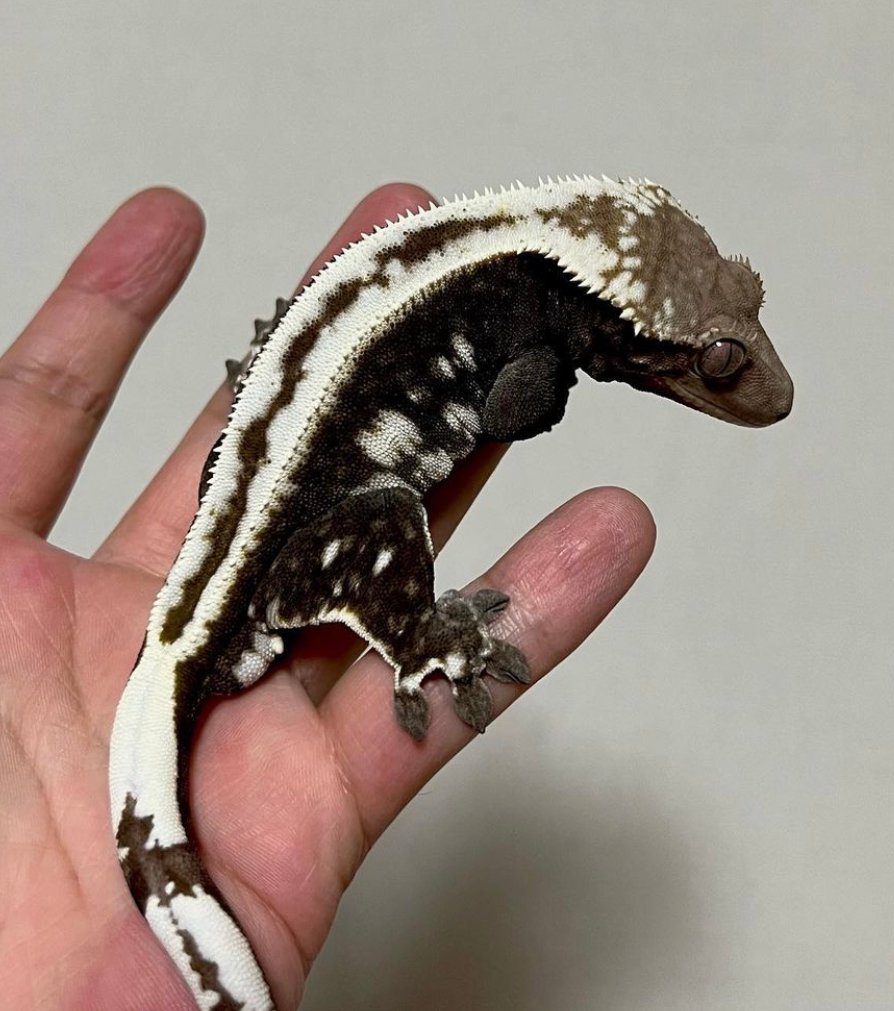Crested Gecko Morphs: Discover the complex genetics and diverse range of base, pattern, and color morphs within this fascinating species. Learn about dominant and recessive genes and polygenic inheritance, and prepare to be amazed by the endless possibilities of Crested Gecko Morphs!
What Are Morphs?
Morphs refer to the distinct variations in the physical characteristics of animals, which can arise through genetic mutations or selective breeding. Crested geckos are no exception to this phenomenon.
Understanding Crested Geckos
Crested geckos are fascinating reptiles that hail from the forests of New Caledonia. They are unique creatures with a wide range of colors and patterns on their skin. Due to their docile nature and ease of care, crested geckos have become increasingly popular as pets in recent years.
Types of Crested Gecko Morphs

Base Morphs
Base morphs are the fundamental variations common to all crested geckos. The three primary base morphs are the normal, flame, and harlequin. Typical crested geckos have a simple, unremarkable appearance, while flame-crested geckos have a bright orange or yellow coloration. Harlequin crested geckos have a distinct, irregular pattern of colors on their skin.
Pattern Morphs
The skin of a pattern morph crested gecko has distinctive markings or stripes. Pinstripe crested geckos have thin, vertical stripes that run down their backs, while quad-stripe crested geckos have four lines that form a cross-like pattern. Dalmatian crested geckos have random spots or scars on their skin, giving them a unique appearance.
Color Morphs
Color morphs are variations in the coloration of the crested gecko’s skin. Red-crested geckos have a reddish hue to their skin, while orange-crested geckos have an orange coloration. Yellow-crested geckos have a yellowish color.
You may Also Interest: Geckos vs Chameleons: Battle of the Reptiles

Genetics of Crested Gecko Morphs
Dominant vs. Recessive
Genes A combination of dominant and recessive genes determines the physical characteristics of crested geckos. Recessive genes need two copies to express, although dominant genes do not.
Polygenic Inheritance
Polygenic inheritance involves characteristics determined by numerous genes. Many of the more complex crested gecko morphs result from polygenic legacy.
You may Also Interest: Green Tree Monitor: A Fascinating and Exotic Species
Breeding Crested Gecko Morphs

Line Breeding
Line breeding involves breeding related crested geckos to produce desirable offspring.
Selective Breeding
Selective breeding involves choosing the most desirable crested geckos and breeding them to produce offspring with even more desirable traits.
Hybridization
Hybridization involves breeding two different species of crested geckos to produce offspring with unique physical characteristics. This technique can be risky, resulting in infertile or unhealthy offspring.
Future of Crested Gecko Morphs
The future of crested gecko morphs is exciting, with new and unique variations constantly created. As our understanding of genetics and selective breeding techniques improves, the possibilities for creating new morphs are endless.
You may Also Interest: 10 Interesting Facts About Chinese Water Dragons
A Comprehensive Guide to Types of Crested Gecko Morphs

Base Morphs
Crested gecko base morphs are the fundamental variations common to all crested geckos. These include the normal, flame, and harlequin morphs. Typical crested geckos have a simple, unremarkable appearance, while flame-crested geckos have a bright orange or yellow coloration. Harlequin crested geckos have a distinct, irregular pattern of colors on their skin.
Normal Morph
The normal morph is the most common of all crested gecko morphs. They have a base color of gray or brown and lack any distinctive patterns or markings.
Flame Morph
Flame morphs have a bright orange or yellow coloration. They are highly sought after by breeders and collectors alike.
Harlequin Morph
The harlequin morph is known for its distinct, irregular pattern of colors on its skin. Harlequin crested geckos have a unique appearance that collectors highly prize.
Pattern Morphs
Unique markings or stripes on the skin of the crested gecko characterize pattern morphs. These include pinstripe, quad-stripe, and dalmatian morphs.
Pinstripe Morph
Pinstripe morphs have thin, vertical stripes that run down their backs.
Quad-Stripe Morph
Quad-stripe morphs have four stripes that form a cross-like pattern on their backs. Collectors have a lot of interest in this pattern.
Dalmatian Morph
Dalmatian morphs have random spots or scars on their skin, giving them a unique appearance. These spots can come in a range of colors and patterns.
Color Morphs
Color morphs are variations in the coloration of the crested gecko’s skin. These include red, orange, and yellow morphs.
Red Morph
Red morphs have a reddish hue to their skin. Many colors and tints make them highly desirable to reptile fans.
Orange Morph
Orange morphs have an orange coloration. Collectors highly seek after them and can come in a range of shades.
Yellow Morph
Yellow morphs have a yellowish coloration. Diverse colors and uniqueness make them desirable to collectors.
You may Also Interest: Exploring the Fascinating World of Blue Tongue Skinks Types
Dominant vs. Recessive Genes

The genetics of crested gecko morphs can be complex. Dominant and recessive genes determine the inheritance of morph traits. Unlike recessive genes, dominant genes always express their characteristic.
Dominant Genes
Dominant genes will always express their characteristic trait, even if only one copy is present. For example, the flame morph in crested geckos is a dominant trait. If a gecko inherits one copy of the flame gene from either parent, it will have a flame appearance.
Recessive Genes
Recessive genes will only express their characteristic trait if both copies are present. For example, the harlequin morph in crested geckos is a recessive trait. To have a harlequin appearance, a gecko must inherit two copies of the harlequin gene, one from each parent.
Polygenic Inheritance
Polygenic inheritance is the inheritance of traits caused by multiple genes. This type of inheritance can create various complex morphs in crested geckos. Examples of polygenic inheritance include the pinstripe morph, in which numerous genes work together to produce characteristic vertical stripes.
Complex Morphs
Complex morphs in crested geckos can result from polygenic inheritance or the interaction of multiple genes. These morphs can be challenging to breed for, resulting in unique and unpredictable offspring.

